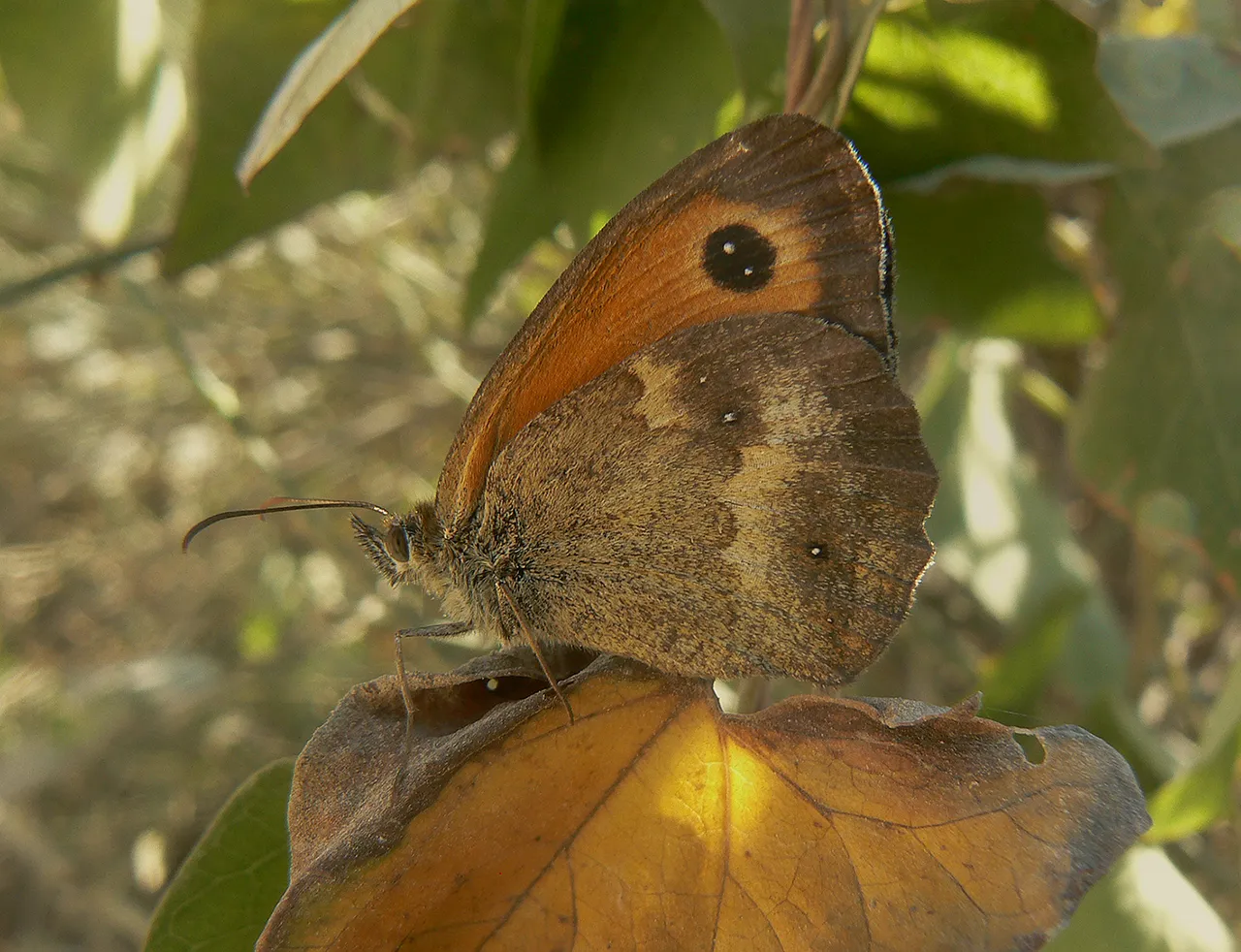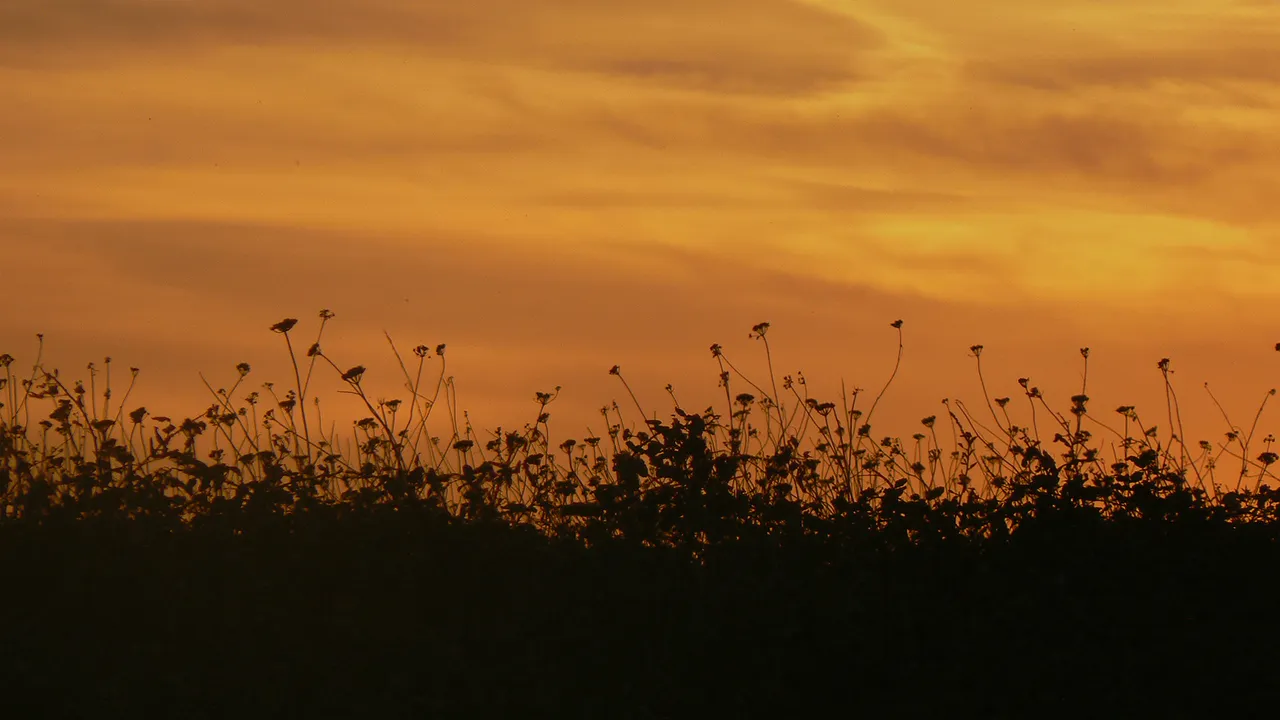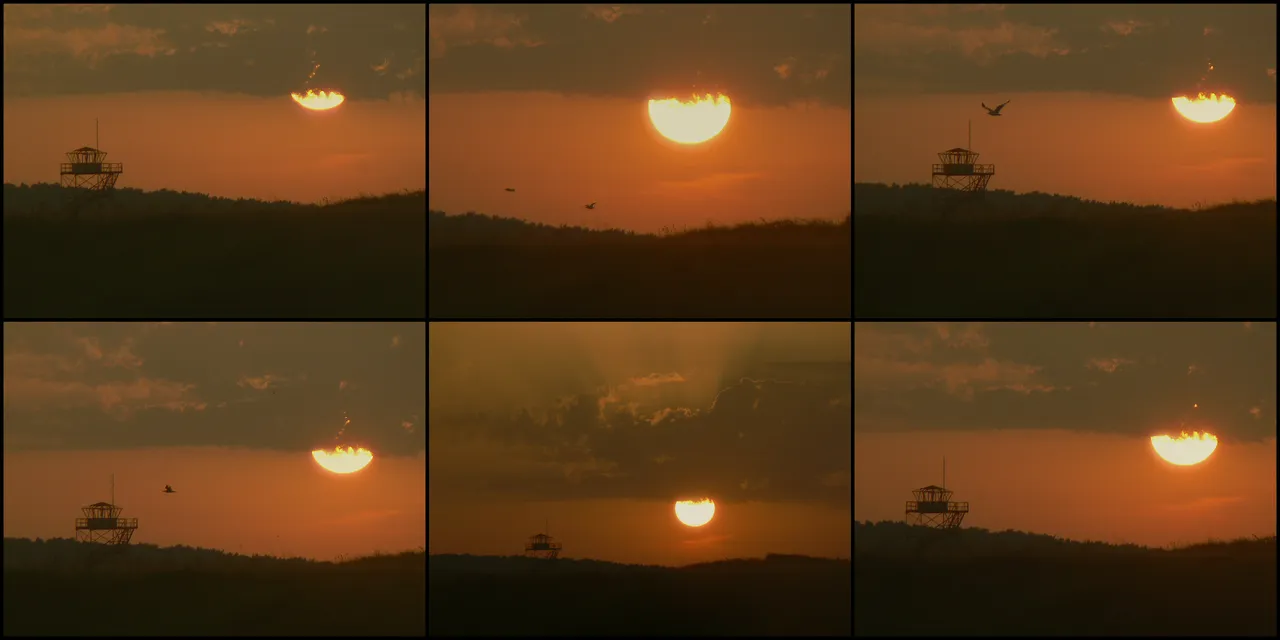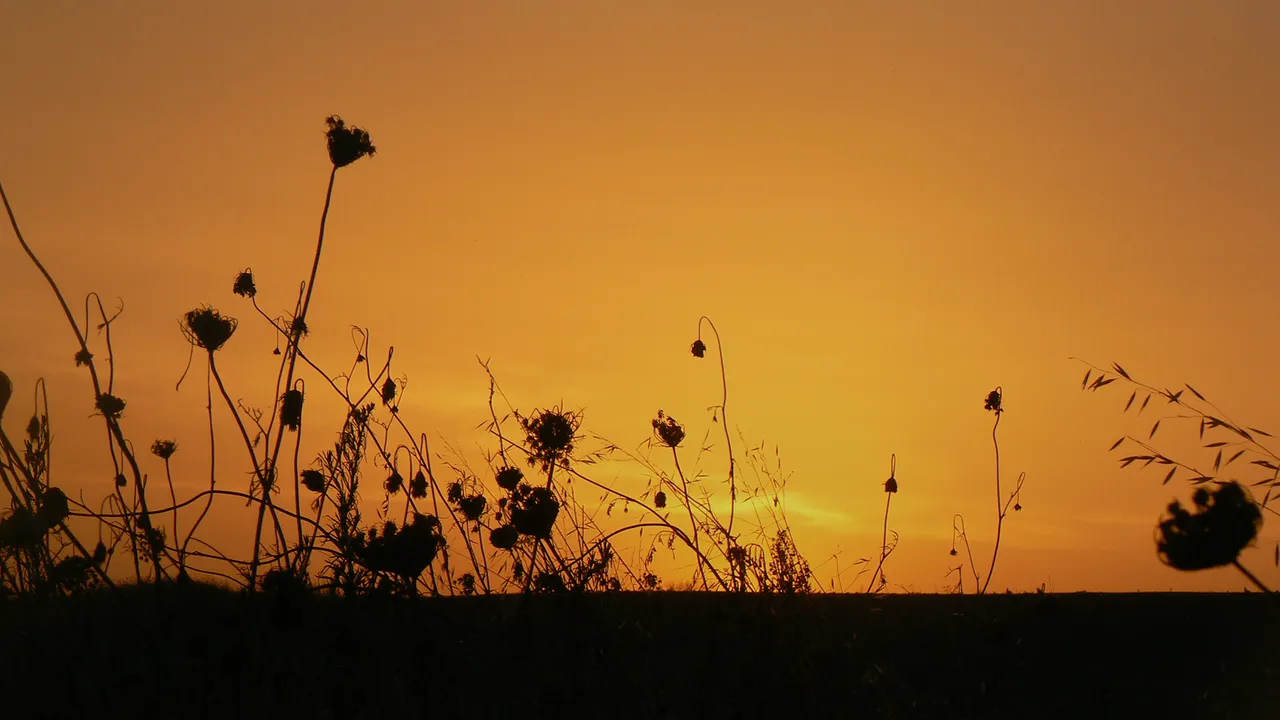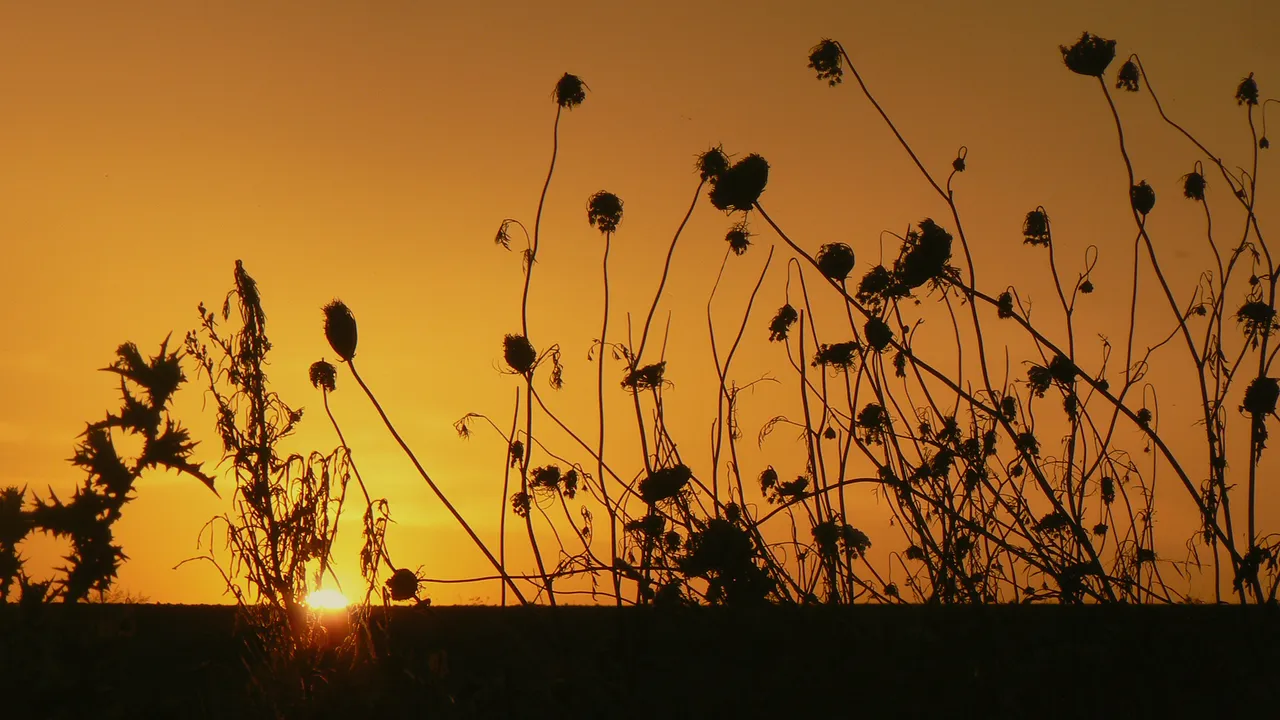It was a series of ordinary summer days. Life was bright. Sunny. The time was right for being somewhere near the sea.
The photographs presented in this post were taken in Marlera ...
... the coastal area a couple of kilometers from the village of Liznjan ...
... and about six or seven kilometers from Medulin, my hometown.
In this photograph, you can see a mating pair of Coenonympha pamphilus butterflies.
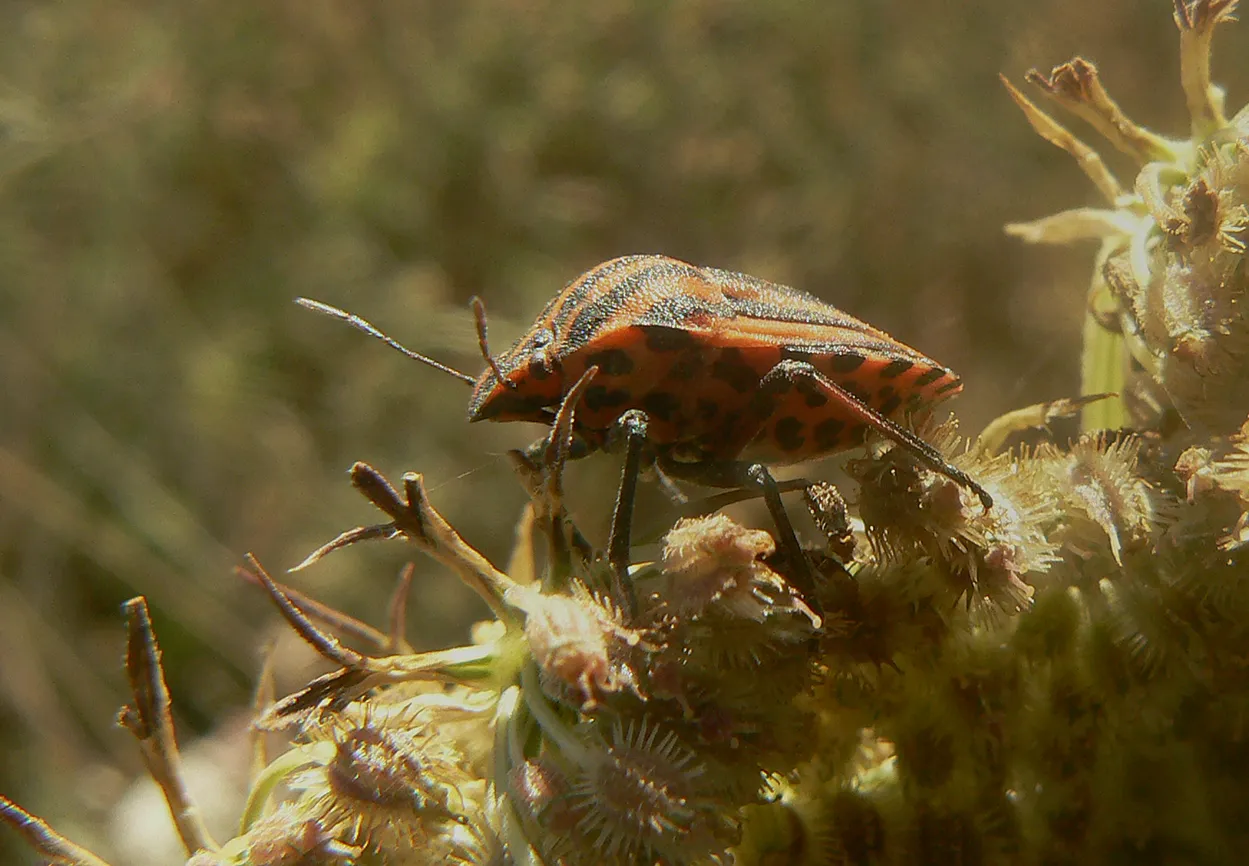
This colorful shieldbug ...

... is the Graphosoma italicum.

In this shot, the bug is using the forelegs to clean its antennae.

Here you can see the Graphosoma italicum mating inside the wild carrot flower head.
In those days, I photographed the scenery mostly in the evening ...

... while the flora & fauna were photographed mainly when the sun was high in the sky.
I'll continue to alternate these two types of photographs throughout the post.
Here you can see the Pyronia tithonus butterfly.
This is Dysgonia algira, a moth from the Noctuidae family. In the following photograph ...

... you can see a well-camouflaged young bird.
This Mediterranean short-toed lark (Alaudala rufescens) has recently left the nest.

It's capable of short flights but still isn't very good at flying.
Here you can see the wild carrots (Daucus carota) silhouettes ...
... photographed at sunset.
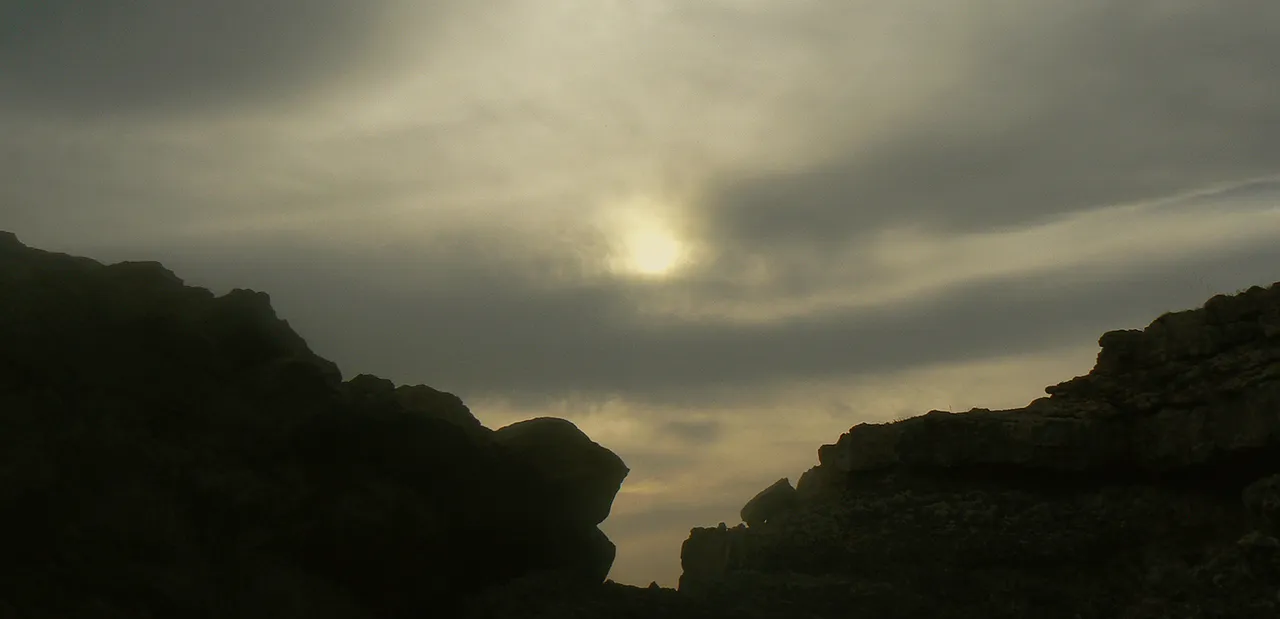
This photograph was taken on a cloudy summer day. The weather was hot and humid.

Here you can see a trio of limpets attached to the coastal rocks.

This small lady beetle was also found and photographed on the rocks very close to the sea. I didn't have the macro lens in 2016.
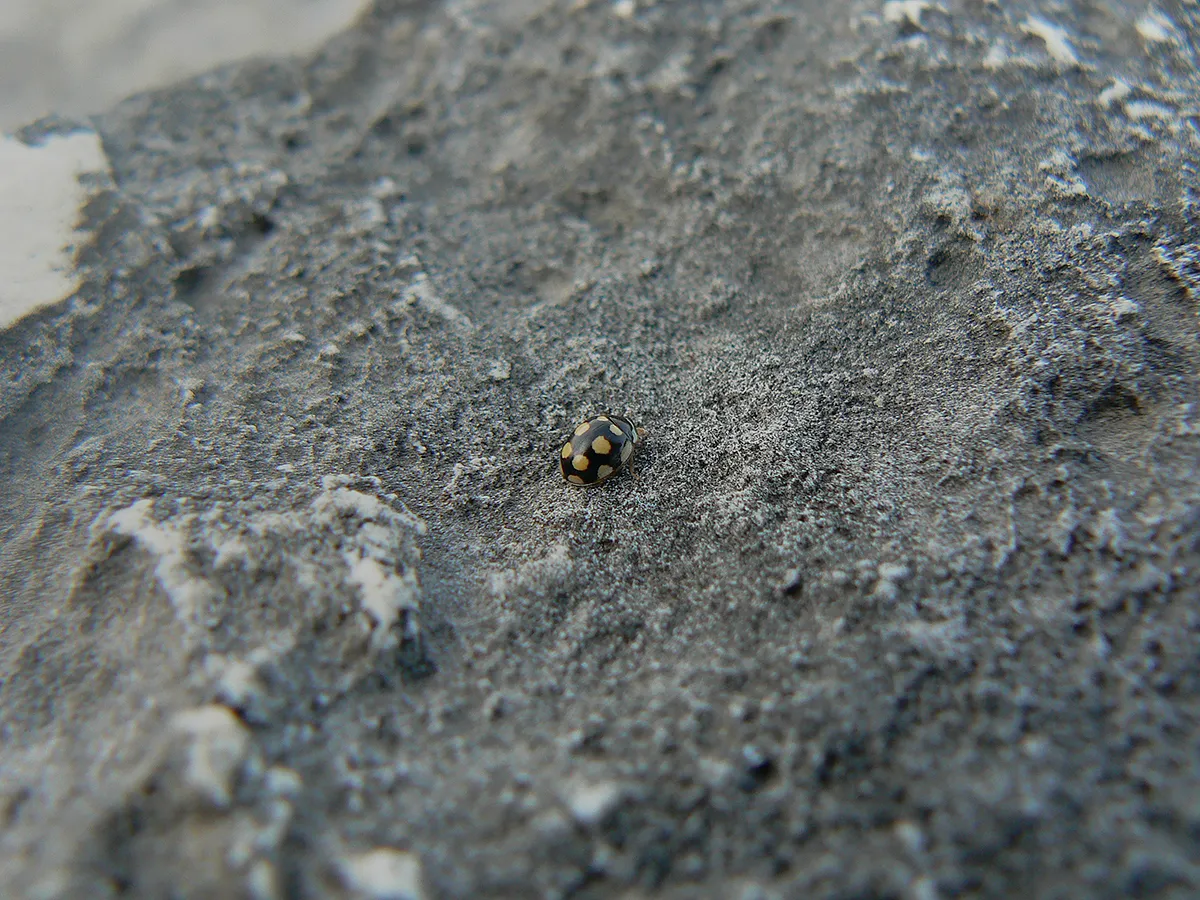
The name of the species is Oenopia lyncea.
In this big set of twelve photographs, you can follow the evening sun on its way down to the mysterious world hidden behind the horizon.
Here you can take a look at the Crithmum maritimum plants that grow on and between the coastal rocks.

These old clamshells stuck inside a hole in the big rock look a bit like fossils. The shells, exposed to the same conditions as the rock, took on the same shades of grey. The hole is cemented with sand, tiny stones, and fragments of various kinds of shells.
Here you can enjoy another sunset scene, while in the following photograph ...
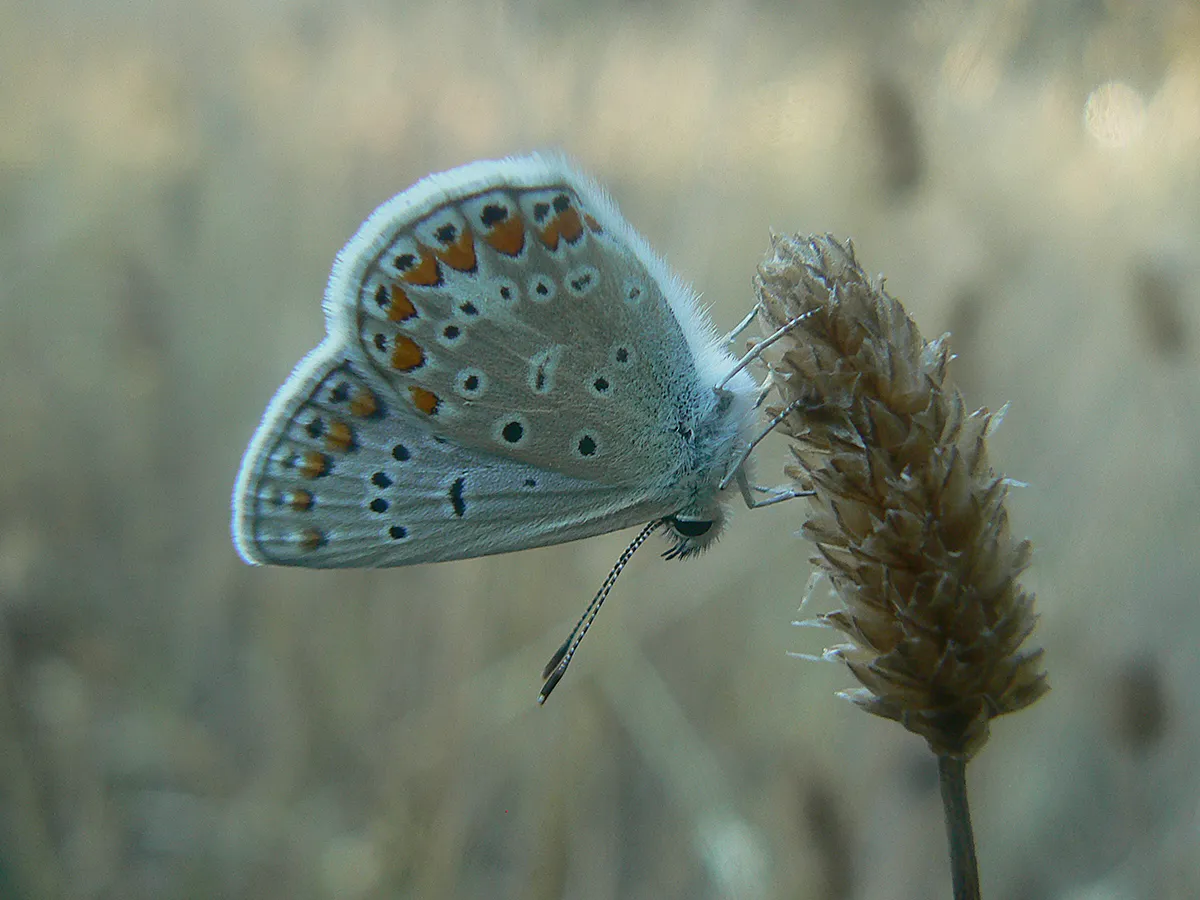
... you can take a look at the Polyommatus icarus butterfly.

This is the Lycaena phlaeas. Both butterflies belong to the Lycaenidae family.
You can see another sunset interlude here. This time I felt inspired to take three of those old shots taken in 2016 and create a simple animated GIF.
The photographs are old but the GIF was made an hour ago.

This is a grasshopper nymph. A young, wingless Anacridium aegyptium. The color of the nymphs varies in this species. You can see a green one here. In the following photograph ...
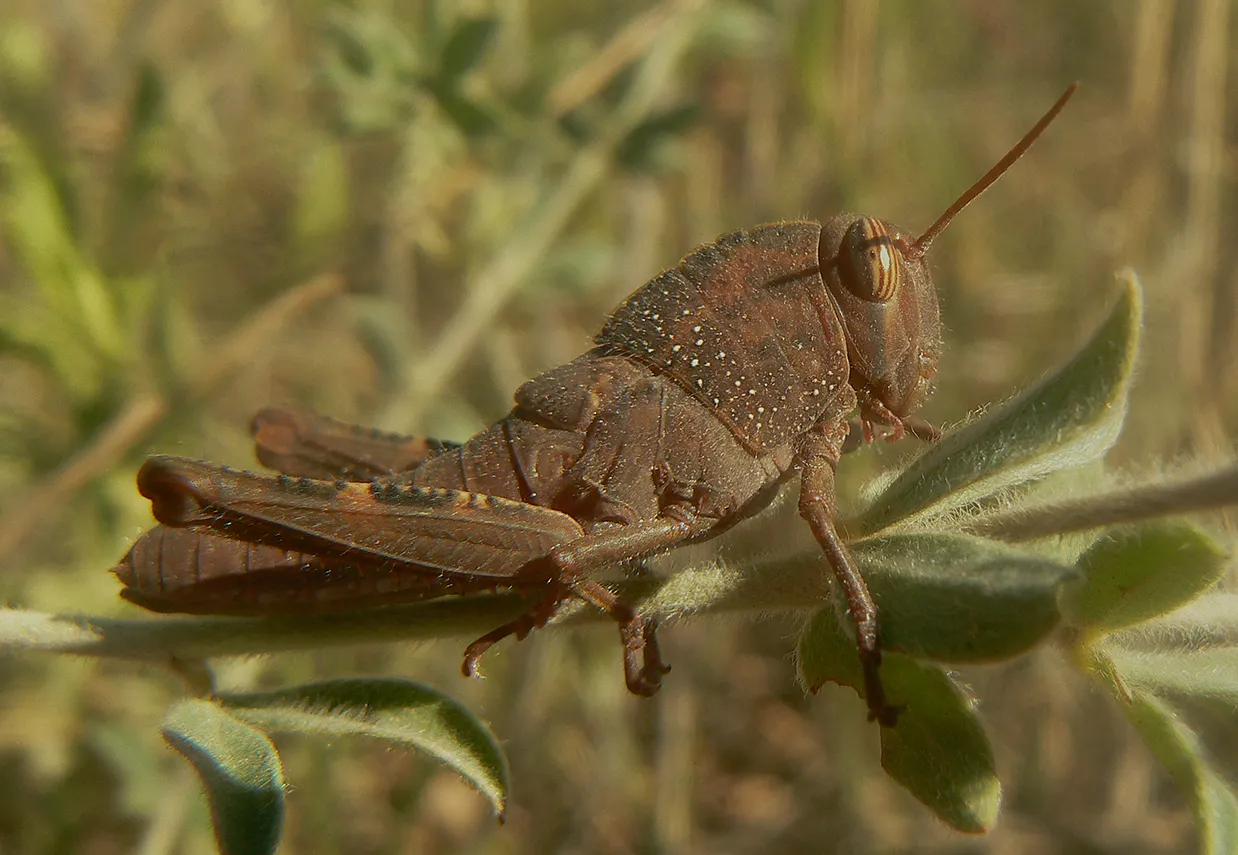
... you can see a brown version of the Anacridium aegyptium nymph.
The area shown in this post was a zone closed to the public until the late 90'. The old, rusted watchtower is a reminder of that military past. In the following set of six evening photographs ...
... you can see the same tower at sunset.

The spider shown hanging upside down in the center of this photograph is the Argiope bruennichi, commonly known as the wasp spider.

Here you can see a slightly different wasp spider. I mean, it's the same species. Always the Argiope bruennichi. But this is a male, while the spider shown in the previous photograph is a female.

In this shot, a flock of seagulls is flying across the evening sky.

The fragrant sticky jewel, shown in this and the following photograph ...

... was produced by the cypress tree. It's a drop of resin, and it looks great on the bark decorated with lichens. There is an overwhelming quantity of inspiration-inducing stuff in nature if you have the eye and mindset for that kind of wild beauty.
Now, what can I say here that already hasn't been said quite a few times earlier in this post? Just a set of evening photographs. That's all.

The cicadas are very loud and active during the peak of the summer here in my area. Before reaching adulthood and becoming dedicated to singing from the tops of shrubs & trees, they live for years as underground nymphs. In this and the following photograph ...

... you can see three empty nymphal exoskeletons left after the metamorphosis that happened during the night or very early in the morning.
Here you can admire yet another evening shot.
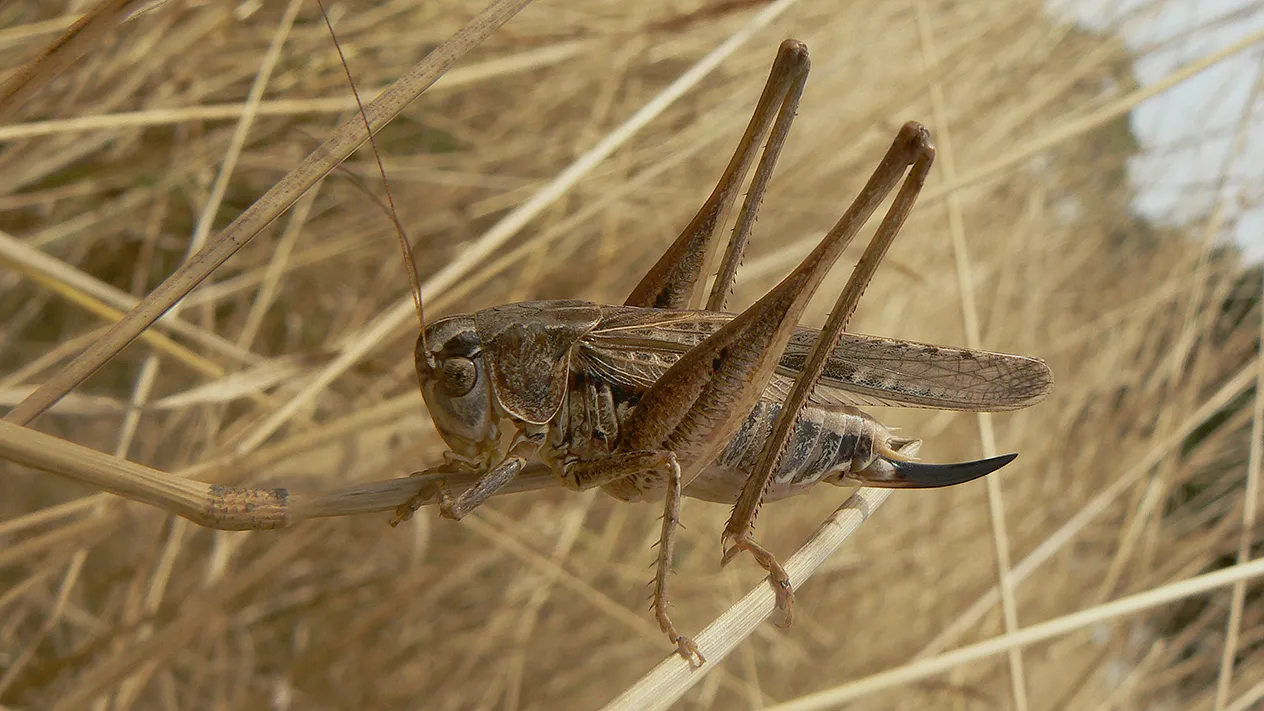
This is a bushcricket. The Platycleis grisea bushcricket.

Here you can see the small nymph of the Pezotettix giornae grasshopper.
Here you can take another look at the evening sky. The clouds, the tower, and all that good stuff.

In this grainy evening shot you can see an interesting moth that mimics the dry twigs. Agdistis meridionalis is the name of this strange species from the Pterophoridae family.

This strange grasshopper that mimics the surrounding twigs and grass was photographed in the middle of a hot summer day.

When it comes to the name of the species, this is the Acrida ungarica, commonly known as the cone-headed grasshopper, nosed grasshopper, or Mediterranean slant-faced grasshopper.

This shot was taken some minutes after sunset. You can see the silhouette of a thistle surrounded by tall dry grass.

Here you can see the Calliptamus italicus grasshopper photographed in the strong midday sun. In the next shot ...

... the same insect is in the shade.

This is the Rhodometra sacraria, a small moth from the Geometridae family.
Here you can see yet another evening scene and in the following photograph ...

... you can take a look at the seed pod of the Silene latifolia plant.

In this evening shot, I used all the zooming my camera can offer to get the distant village of Liznjan closer to my eyes.
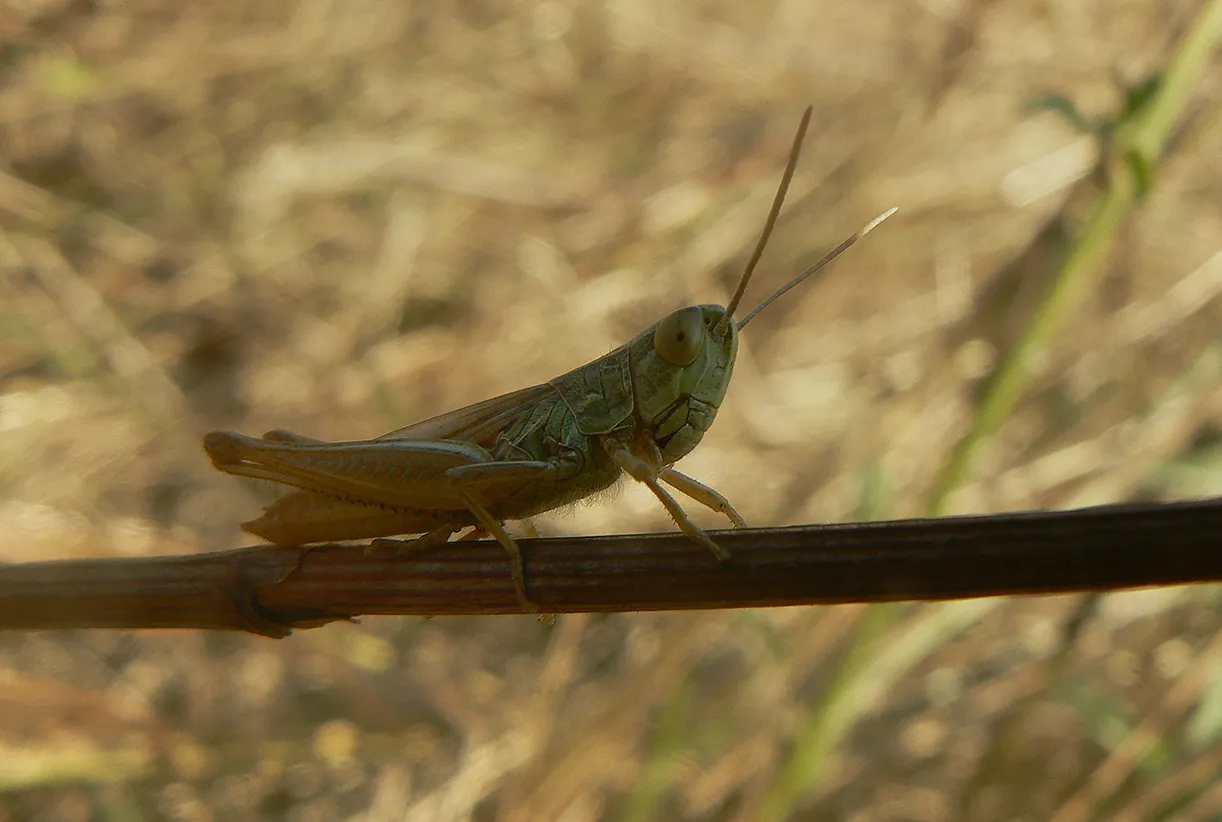
Here you can see another grasshopper. The name of the species is Euchorthippus declivus.
You can take another look at the distant seagulls and clouds in this set of four evening photographs.

In this and the following shot ...
... you can admire the simple beauty of the dry grass photographed in the light of the late afternoon.

Here you see a bug from the Alydidae family. The name of the species is Camptopus lateralis.

This small, juvenile spider, probably young Neoscona adianta, was photographed early in the morning.

And that's it.
Well - almost.

I have a few more photographs to show ...
... but nothing else to say.

THE END
AS ALWAYS HERE ON HIVE, THE PHOTOGRAPHS ARE MY WORK.






